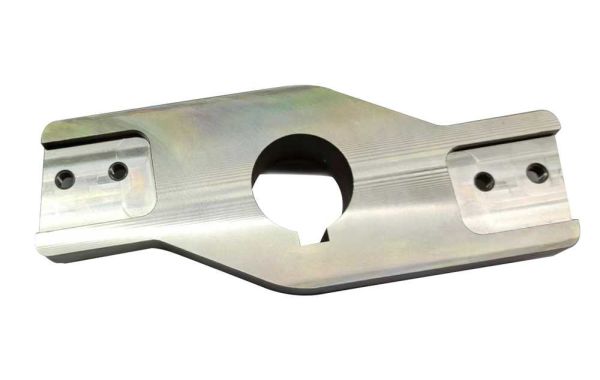Tool wear is inevitable during steel machining, but it can be minimized through proper practices:
1. Choosing the Right Tool Material
- Hardness: Select a tool material with sufficient hardness to withstand the abrasive nature of steel. Carbide or coated carbide tools typically offer better wear resistance than HSS for steel machining.
- Toughness: Consider the toughness of the tool material, especially when dealing with high-impact machining operations. A tougher tool can resist chipping and breakage.
2.Optimizing Cutting Parameters
- Cutting Speeds and Feeds:Following recommended cutting speeds and feed rates helps prevent excessive heat generation at the cutting zone. High temperatures accelerate tool wear. Refer to manufacturer recommendations for specific tools and steel types.
- Minimize Chip Recirculation:Ensure proper chip evacuation to prevent hot chips from re-circulating and contacting the tool again. This can be achieved through appropriate chip flute geometry and using a sufficient coolant flow.
3. Effective Coolant Application
- Coolant Selection: Use a coolant specifically formulated for steel machining. These coolants often contain lubricants and extreme pressure additives that reduce friction and wear at the tool-chip interface.
- Coolant Delivery:Direct the coolant flow towards the cutting zone to effectively cool the tool and workpiece. A well-directed coolant stream washes away chips and reduces heat build-up.
4. Toolpath Strategies
- Minimize Tool Engagement Time: Program efficient toolpaths that minimize the time the tool spends engaged with the material. This reduces overall tool wear.
- Reduce Tool Dwell Time:Avoid excessive dwell times at the bottom of pockets or corners. This can generate localized heat and accelerate wear.
5. Proper Tool Maintenance
- Sharp Tools: Maintain sharp cutting edges by using appropriate sharpening techniques or replacing dull tools promptly. A dull tool requires more force to cut, leading to increased wear.
- Tool Cleaning:Clean the tool after use to remove any built-up chips or debris that can contribute to wear.
6. Monitoring and Adjustments
- Visual Inspection: Regularly inspect the tool for signs of wear like flank wear, chipping, or crater wear. Early detection allows for timely tool replacement and avoids further damage.
- In-Process Monitoring:Modern CNC machines may offer in-process monitoring capabilities. These can monitor factors like cutting forces and vibrations, which can indicate potential tool wear issues.
By following these practices, you can significantly extend tool life when machining steel parts on your CNC machine. Remember, using the right tool, optimizing cutting conditions, and proper maintenance are key to achieving efficient and cost-effective steel machining.








